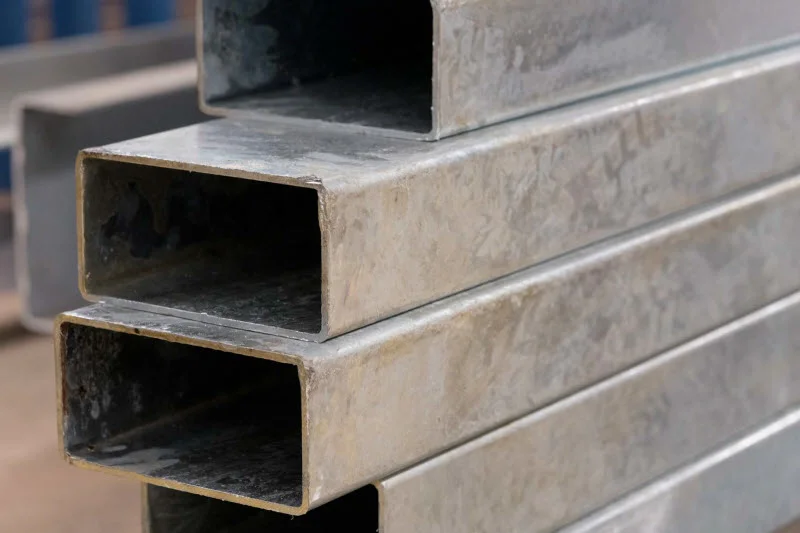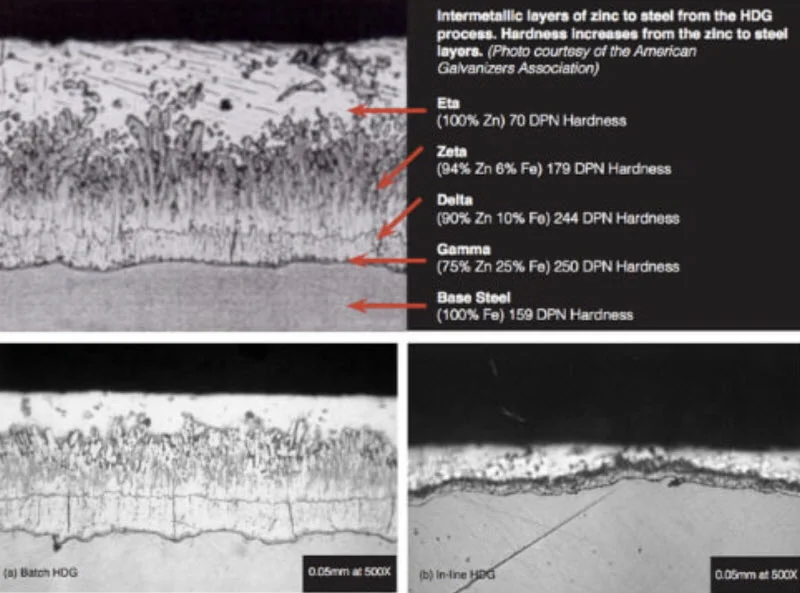What is the difference between pre-gal and hot-dip galvanised steel?

Galvanised coatings on steel, which are part of the metallic coatings range, are typically known to be a long-lasting, durable and cost-effective way to protect steel from the effects of corrosion.
It is important to remember that your unique project requirements and the intended use of the steel will determine which coating is better for your project.
All steel suppliers, including Edcon Steel, will stock and supply many types of steel, so make sure you’re sourcing the right product for your application.

What is galvanising?
Before we get to the difference between pre-galvanising and hot dip galvanising, we must first understand what it means to galvanise metal.
Galvanisation is a process that involves applying a protective coating of zinc to metals like steel or iron.
Applying a zinc coating offers protection against rust and corrosion, effectively increasing the durability or longevity of the metal, as the zinc surrenders itself instead of the steel.
There are several ways of applying the zinc coating, with each process having unique characteristics and advantages.
Although galvanised coatings won’t prevent corrosion indefinitely, galvanised steel will last much longer than unprotected steel when exposed to the same conditions.

The pre-galvanising process
Pre-gal, which is also known as ‘in-line’, ‘continuous’ or ‘mill’ galvanising and encompasses brand names such Duragal, Allgal and Supagal, is when steel products are galvanised using an automated process before they have been cut to size and processed.
When steel components are used to fabricate a more complex finished product, they may be galvanised before the final product is assembled. This is what is known as pre-gal.
This automated process will differ, depending on the type of steel component being processed. Typically, the steel components are immersed in a ‘galvanising bath’ of molten zinc for a short period.
Once the steel is removed from the bath, excess zinc is removed using a mechanical wiper, air knife or steam. This leaves a relatively thin galvanised coating of zinc.

The hot-dip galvanising (HDG) process
HDG applies a zinc coating by immersing the completed steelwork in a molten zinc bath.
The steel is lowered into the bath at an angle that allows air to escape from tubular shapes or other pockets and the zinc to flow into, over and through the entire section.
While immersed in the bath, the iron in the steel metallurgically reacts with the zinc to form zinc-iron layers and an outer layer of pure zinc.
The metallurgical bonds formed between the steel substrate and the zinc are such that, when you analyse the steel cross-section and coating, it varies from free zinc to steel with intermediate layers of zinc-steel phases.
In essence, it is said that the “steel and the zinc become one.” Such a trait ensures a good adhesion and abrasion resistance of the zinc to steel. HDG typically results in a thicker zinc coating than pre-galvanisation.
The differences
Coating thickness: In pre-gal, coating thickness may vary, but it is typically around 20μm for sheets and 20-30μm for tubes and wires. HDG features a thicker coat, with minimum average requirements of 45-85μm.
Coating continuity: While HDG will have a continuous coating over the whole steel structure, pre-gal will have uncoated areas at the cut edges.
Coating bond: Both HDG and pre-gal coatings will have strong metallurgical bonds with the base steel.
Coating formability: Pre-gal steel will have a thin coating that can typically be formed without any damage. HDG, however, should not be formed after galvanising as it may damage the coating.
Coating appearance: Pre-gal coatings are typically uniform and bright in appearance, whereas HDG can vary.
Are you looking for complete steel solutions?
Edcon Steel is Australia’s most comprehensive online steel and metal superstore. We cut and supply steel and metal – in a wide range of shapes, sizes and grades – for all your project needs.
We know metal and steel – and we know our customers appreciate our service and stockholding, so feel free to contact us for your steel or metal solution today.








